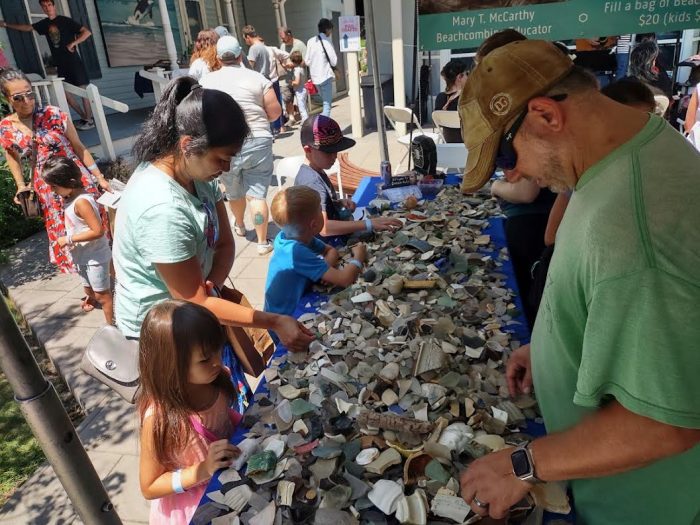The Whaling Museum & Education Center of Cold Spring Harbor, in partnership with TBR News Media of Setauket, has announced the launch of a Sea Glass Fiction Contest. This exciting competition invites students in grades 3 to 12 from Nassau and Suffolk counties to unleash their creativity by crafting stories inspired by a piece of sea glass.

The contest, which kicked off this month, challenges participants to imagine a unique journey for the selected sea glass fragment chosen by The Whaling Museum and to weave a captivating tale around it. The winning stories will have the chance to be read at the museum’s annual Sea Glass Festival, a prestigious event celebrating sea glass and its significance in maritime history.
“Sea glass has a way of capturing the imagination, and we can’t wait to read the imaginative stories that come out of this unique contest,” said Nomi Dayan, Executive Director at The Whaling Museum.
Entries must be submitted electronically through the submission form on The Whaling Museum website by April 30, 2024. The contest is free to enter, and all works must be original and written solely by the author. Only residents of Nassau and Suffolk counties are eligible to participate.
“We look forward to the opportunity to celebrate and highlight the creative tales of students in the area,” said Daniel Dunaief, a journalist with TBR News Media. “Entrants can envision ways a piece of glass, shaped by water and time, provides a clue in a compelling narrative.”
Winners will be notified on or about June 1-7, 2024, and select winning entries will be eligible for publication in TBR News Media and on The Whaling Museum’s website. TBR will also highlight the winners in a weekly podcast. In addition, contest winners will receive complimentary tickets to The Whaling Museum’s Sea Glass Festival, held on July 21, 2024, where they will be recognized with a certificate.
“We are grateful to TBR News Media for partnering with us on this contest and helping to bring these young writers’ stories to a wider audience,” added Dayan.
For more information on the Sea Glass Fiction Contest, including guidelines and submission details, please visit cshwhalingmuseum.org/seaglasscontest.






